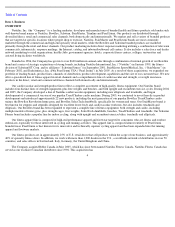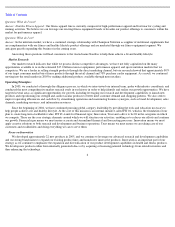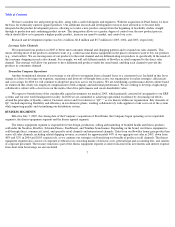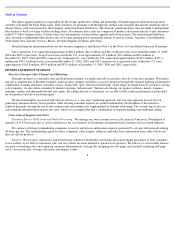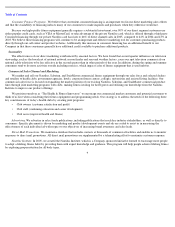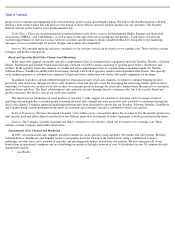Nautilus 2005 Annual Report Download - page 15
Download and view the complete annual report
Please find page 15 of the 2005 Nautilus annual report below. You can navigate through the pages in the report by either clicking on the pages listed below, or by using the keyword search tool below to find specific information within the annual report.
Table of Contents
The international markets represent a strong opportunity for growth, driven by the continued fitness boom across Europe and the
increasing focus on fitness and healthy lifestyles by more affluent consumers in Asia and Latin America. In fact, according to recent data
published by IHRSA, there are approximately 27,000 health clubs in Europe, 12,200 in Latin America and 4,500 in the Asia/Australia market.
For comparison, according to IHRSA there are approximately 26,800 clubs with approximately 41.3 million members operating in the U.S as
of January 2004. According to the 2005 IHRSA European Market Report, health club memberships in the United Kingdom totaled 6.1 million
in 2004 compared with 1.5 million in 1996, an increase of over 300%. Health club memberships in Germany totaled 4.5 million in 2004
compared with 3.3 million in 1995, an increase of 36%. We believe demand for U.S. products will increase, as foreign consumers increasingly
demand the reliability, service and innovative designs provided by U.S. suppliers.
Trends in Apparel Products
We believe our future growth in the fitness apparel segment will come from a number of demographic and market trends that are
currently in place and that we expect will continue, including:
•
Growing awareness of health and fitness trends and the positive effects of exercise will lead to increased demand for performance
apparel and footwear;
•
High profile cycling stars have created a great deal of interest in cycling, which translates into increased sales for cycling apparel;
•
An aging population is becoming more active and will purchase products for a longer period of time than previous generations;
•
The increase in the use of health clubs and the opportunities within this segment in terms of specific fitness apparel will increase
demand for our product;
•
High healthcare costs are focusing more attention on exercise and fitness and will help increase participation and sales;
•
Government support for programs that promote fitness will help increase sales; and
According to SGMA International, athletic apparel and athletic footwear represented approximately 47% and 20%, respectively, of the
estimated $55.7 billion U.S. Sporting Goods industry in 2005. SGMA International projects growth of approximately 8% and 8.5% in the
markets for athletic apparel and athletic footwear, respectively, in 2006.
According to The Outdoor Industry Association and SGMA International, the most popular outdoor activities in 2003 were cycling with
87.0 million participants, hiking with 71.6 million participants and running with 36.2 million participants. The athletic apparel market is driven
by functional and aspirational needs and 31% of the market is performance oriented, leading to growing demand for shopping specialty
channels.
According to The Outdoor Industry Association, out of 142 million of U.S. active outdoor enthusiasts, 31% of outdoor enthusiasts were
44 or older. Cross-participation is high and growing –
88% of enthusiasts participate in more than one outdoor activity and 72% of cyclists also
run and hike. As the number of baby-boomers interested in outdoor activities continues to increase, there will be more opportunities for cross
selling of athletic footwear and apparel to different activity interest groups.
Trends in Nutrition Products
•
Growth in the global economy, presenting future sales opportunities in additional countries.
The market for nutritional supplements is large and yet is highly fragmented. According to the Nutrition Business Journal (the “NBJ”),
United States nutritional supplement sales totaled $20.3 billion in 2004 compared to $19.8 billion in 2003, representing a 3% increase. Within
the nutritional supplements industry we currently compete in the sports nutrition supplements and meal replacement categories, an estimated
$2.1 billion market.
14


